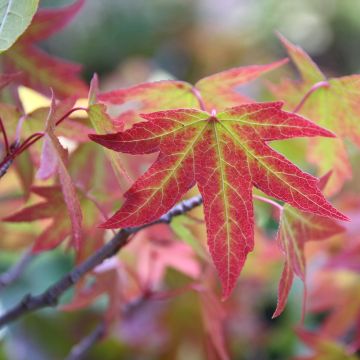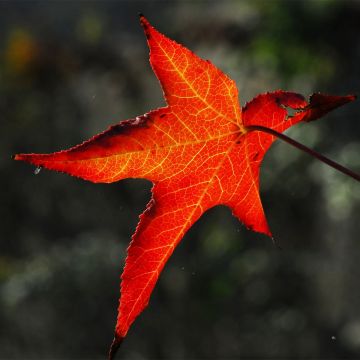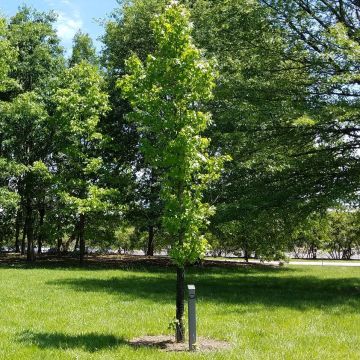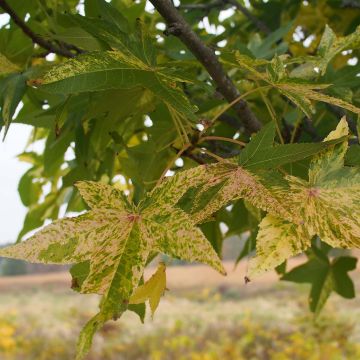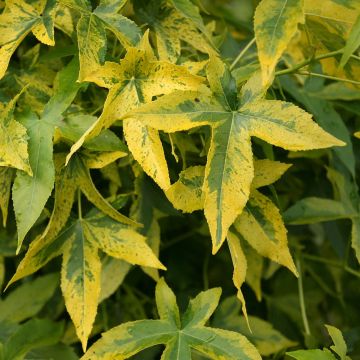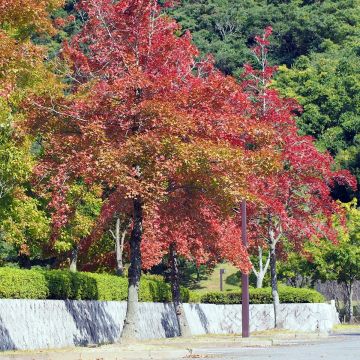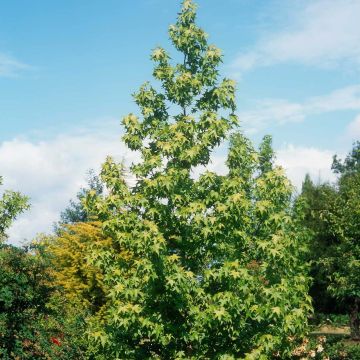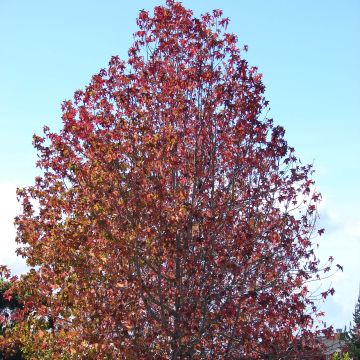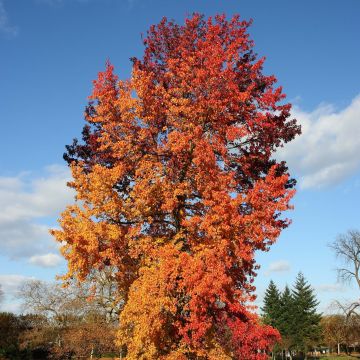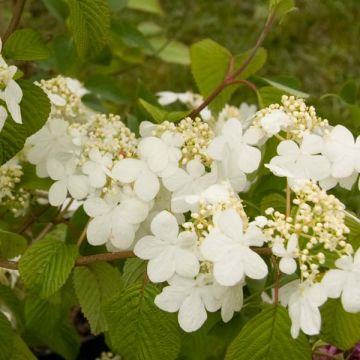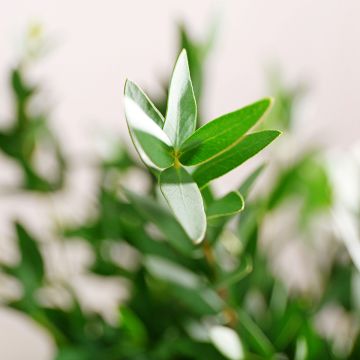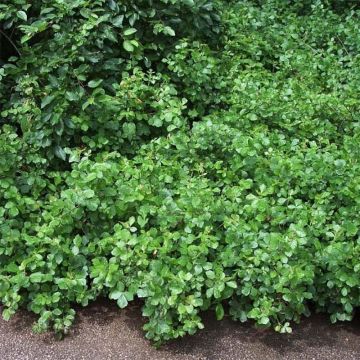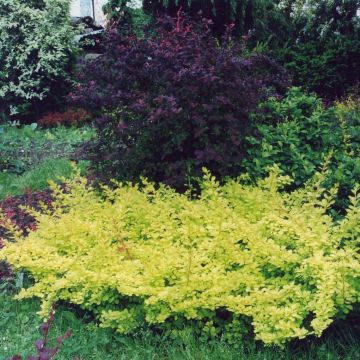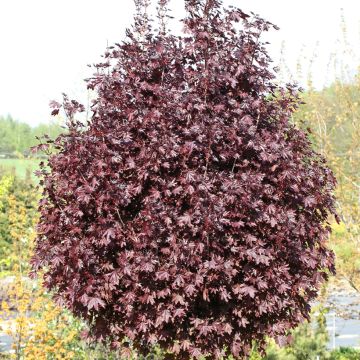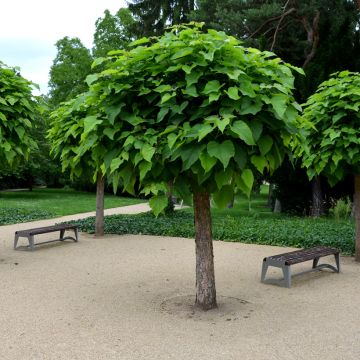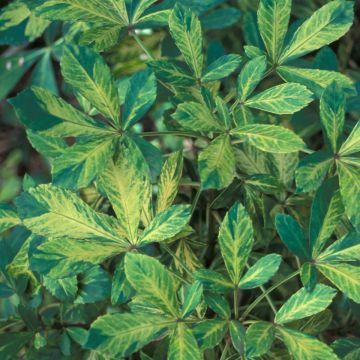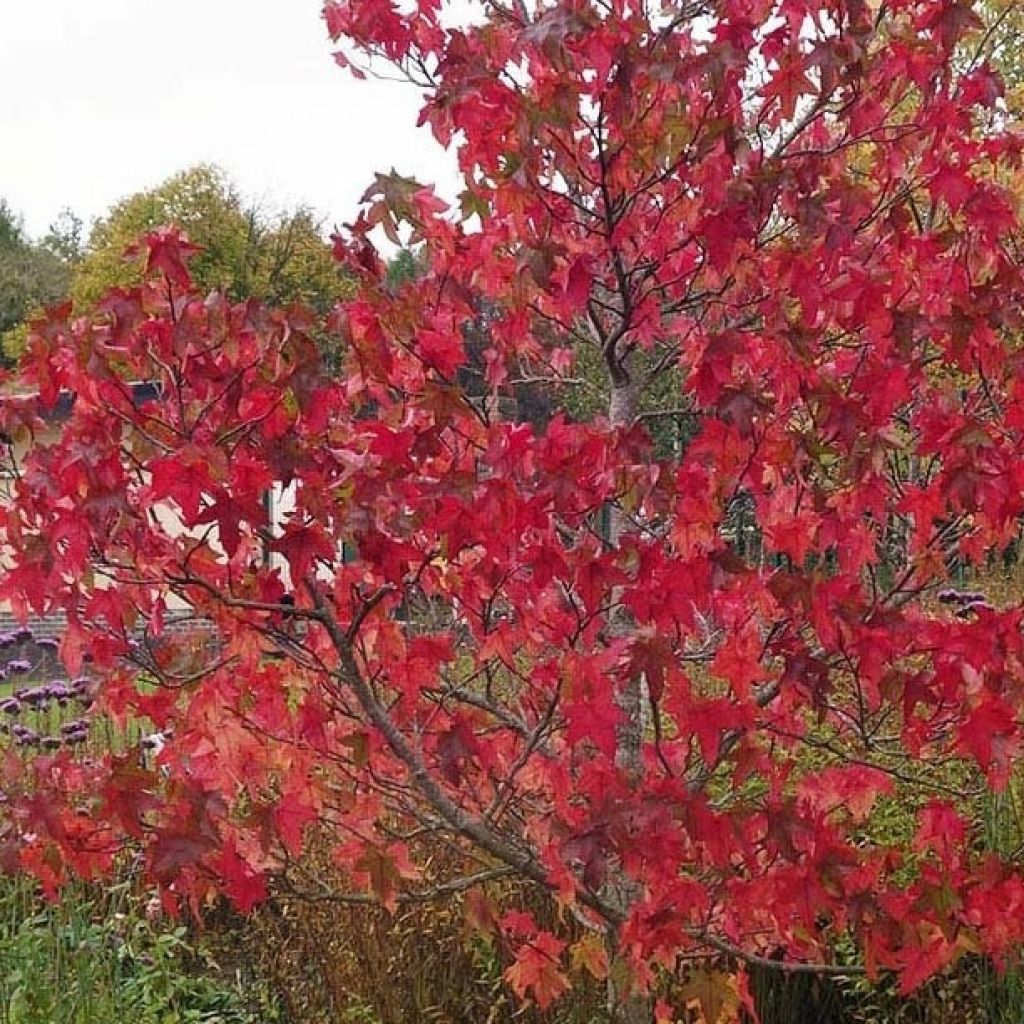

Liquidambar styraciflua Lane Roberts - American Sweetgum
Liquidambar styraciflua Lane Roberts - American Sweetgum
Liquidambar styraciflua 'Lane Roberts'
American Sweetgum, Redgum, Satin-walnut, Alligator-wood
This item cannot be shipped to the selected country
Delivery charge from €5.90
Delivery to Corse prohibited
More information
Schedule delivery date,
and select date in basket
This plant carries a 24 months recovery warranty
More information
We guarantee the quality of our plants for a full growing cycle, and will replace at our expense any plant that fails to recover under normal climatic and planting conditions.
From €5.90 for pickup delivery and €6.90 for home delivery
Express home delivery from €8.90.
Delivery to Corse prohibited: UE law prohibits the import of this plant from mainland France to Corse as part of the fight against Xylella fastidiosa. Please accept our sincere apologies.
More information
Does this plant fit my garden?
Set up your Plantfit profile →
Description
Liquidambar styraciflua 'Lane Roberts', or American Sweetgum 'Lane Roberts', is a tall tree with large lobed leaves that turn magnificent colours in autumn, ranging from yellow to reddish-purple. More compact than the wild species, native to the United States, this variety obtained by the English nursery Hillier in 1971 has a well-structured and pyramidal habit and can be used even in small-sized gardens.
Belonging to the family Altingiaceae (or Hamamelidaceae), the American Sweetgum 'Lane Roberts' will reach approximately 10 to 12 metres (32 feet 10 inches to 39 feet 5 inches) in height and 5 to 6 metres (16 feet 5 inches to 19 feet 8 inches) in width. Its growth is quite rapid. The leaves, with large pointed lobes resembling maple leaves, are shiny green. They develop beautiful autumn colours late, ranging from yellow to orange, red, and even purple, remaining on the tree for a long time. The spring flowers are insignificant and are followed by curious green (then brown) balls adorned with pointed protrusions, which are highly ornamental. The corky, grey-green bark darkens and cracks with age, becoming highly decorative over the years.
This hardy tree prefers deep, moist, and humus-rich soils, and can tolerate brief periods of flooding. It prefers slightly acidic to neutral soils, without too much limestone. Pruning is unnecessary, except to remove crossing or dead branches. In regions with mild and cool summers, it sometimes happens that Liquidambars produce several competing branches from the central axis, resulting in a "forked" appearance. This can sometimes lead to breakage in strong winds after a few years.
Equally suitable for small spaces and large parks, the 'Lane Roberts' Liquidambar will thrive in a clear and sunny location, where its natural habit can fully develop. In well-drained soil, it will harmonize beautifully with other trees with vibrant autumn colours, such as the Ginkgo biloba, the paperbark maple (Acer griseum), the Korean mountain ash (Sorbus commixta), as well as with bushes of similar qualities, such as the winged Euonymus (Euonymus alatus), the Lamarck's serviceberry (Amelanchier lamarckii), the guelder rose (Viburnum opulus), or the 'Midwinter Fire' bloodtwig dogwood (Cornus sanguinea 'Midwinter Fire') with its beautiful coral winter stems.
Report an error about the product description
Liquidambar styraciflua Lane Roberts - American Sweetgum in pictures
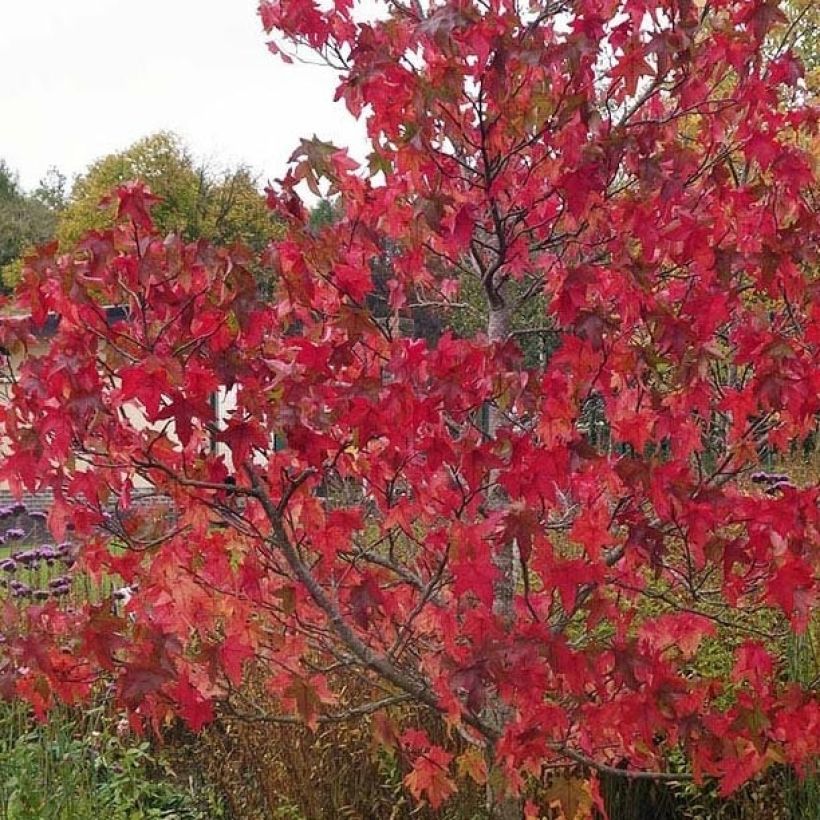

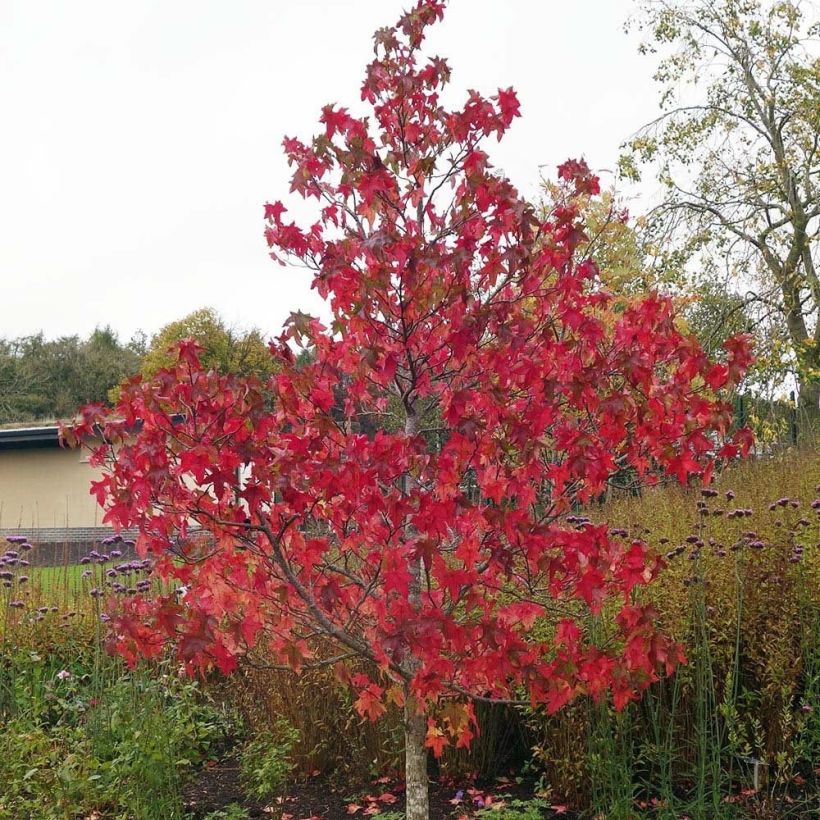

Plant habit
Flowering
Foliage
Botanical data
Liquidambar
styraciflua
'Lane Roberts'
Altingiaceae
American Sweetgum, Redgum, Satin-walnut, Alligator-wood
Cultivar or hybrid
Other Liquidambar - Sweetgum
Planting and care
Liquidambar styraciflua 'Lane Roberts' thrives in the sun sheltered from strong winds, in a light and deep soil, moist but not marshy, preferably acidic and definitely not chalky, preferably humus-bearing and loamy. Pruning is not necessary. Water regularly in the first few years to help it establish. It is a disease and pest-resistant tree.
Planting period
Intended location
Care
-
, onOrder confirmed
Reply from on Promesse de fleurs
Striking foliage shrubs
Haven't found what you were looking for?
Hardiness is the lowest winter temperature a plant can endure without suffering serious damage or even dying. However, hardiness is affected by location (a sheltered area, such as a patio), protection (winter cover) and soil type (hardiness is improved by well-drained soil).

Photo Sharing Terms & Conditions
In order to encourage gardeners to interact and share their experiences, Promesse de fleurs offers various media enabling content to be uploaded onto its Site - in particular via the ‘Photo sharing’ module.
The User agrees to refrain from:
- Posting any content that is illegal, prejudicial, insulting, racist, inciteful to hatred, revisionist, contrary to public decency, that infringes on privacy or on the privacy rights of third parties, in particular the publicity rights of persons and goods, intellectual property rights, or the right to privacy.
- Submitting content on behalf of a third party;
- Impersonate the identity of a third party and/or publish any personal information about a third party;
In general, the User undertakes to refrain from any unethical behaviour.
All Content (in particular text, comments, files, images, photos, videos, creative works, etc.), which may be subject to property or intellectual property rights, image or other private rights, shall remain the property of the User, subject to the limited rights granted by the terms of the licence granted by Promesse de fleurs as stated below. Users are at liberty to publish or not to publish such Content on the Site, notably via the ‘Photo Sharing’ facility, and accept that this Content shall be made public and freely accessible, notably on the Internet.
Users further acknowledge, undertake to have ,and guarantee that they hold all necessary rights and permissions to publish such material on the Site, in particular with regard to the legislation in force pertaining to any privacy, property, intellectual property, image, or contractual rights, or rights of any other nature. By publishing such Content on the Site, Users acknowledge accepting full liability as publishers of the Content within the meaning of the law, and grant Promesse de fleurs, free of charge, an inclusive, worldwide licence for the said Content for the entire duration of its publication, including all reproduction, representation, up/downloading, displaying, performing, transmission, and storage rights.
Users also grant permission for their name to be linked to the Content and accept that this link may not always be made available.
By engaging in posting material, Users consent to their Content becoming automatically accessible on the Internet, in particular on other sites and/or blogs and/or web pages of the Promesse de fleurs site, including in particular social pages and the Promesse de fleurs catalogue.
Users may secure the removal of entrusted content free of charge by issuing a simple request via our contact form.
The flowering period indicated on our website applies to countries and regions located in USDA zone 8 (France, the United Kingdom, Ireland, the Netherlands, etc.)
It will vary according to where you live:
- In zones 9 to 10 (Italy, Spain, Greece, etc.), flowering will occur about 2 to 4 weeks earlier.
- In zones 6 to 7 (Germany, Poland, Slovenia, and lower mountainous regions), flowering will be delayed by 2 to 3 weeks.
- In zone 5 (Central Europe, Scandinavia), blooming will be delayed by 3 to 5 weeks.
In temperate climates, pruning of spring-flowering shrubs (forsythia, spireas, etc.) should be done just after flowering.
Pruning of summer-flowering shrubs (Indian Lilac, Perovskia, etc.) can be done in winter or spring.
In cold regions as well as with frost-sensitive plants, avoid pruning too early when severe frosts may still occur.
The planting period indicated on our website applies to countries and regions located in USDA zone 8 (France, United Kingdom, Ireland, Netherlands).
It will vary according to where you live:
- In Mediterranean zones (Marseille, Madrid, Milan, etc.), autumn and winter are the best planting periods.
- In continental zones (Strasbourg, Munich, Vienna, etc.), delay planting by 2 to 3 weeks in spring and bring it forward by 2 to 4 weeks in autumn.
- In mountainous regions (the Alps, Pyrenees, Carpathians, etc.), it is best to plant in late spring (May-June) or late summer (August-September).
The harvesting period indicated on our website applies to countries and regions in USDA zone 8 (France, England, Ireland, the Netherlands).
In colder areas (Scandinavia, Poland, Austria...) fruit and vegetable harvests are likely to be delayed by 3-4 weeks.
In warmer areas (Italy, Spain, Greece, etc.), harvesting will probably take place earlier, depending on weather conditions.
The sowing periods indicated on our website apply to countries and regions within USDA Zone 8 (France, UK, Ireland, Netherlands).
In colder areas (Scandinavia, Poland, Austria...), delay any outdoor sowing by 3-4 weeks, or sow under glass.
In warmer climes (Italy, Spain, Greece, etc.), bring outdoor sowing forward by a few weeks.

































